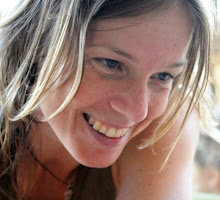We continued and drove through the most amazing nature surroundings, that has contributed to giving the region the nick name The Provence of Israel. Many of the best wineries in Israel are situated in this region and the hill sides in the wavy landscape are patterned by wine groves, fruit trees and wild growing pine forests. Unfortunately it was Shabbat, and the winery we spontaneously tried to visit, was closed. We drove over the hills of Naftali and from the top you get an exquisite view to the East, with the Hula Valley in the foreground, with the Golan Heights in the background.

Hula Valley, seen from Keren Naftali
Golan Heights with Mount Hermon in the background
Hula Valley is Israel's contribution to the list of stupid interventions made by humanity on nature. Originally, basically the whole valley was a big swamp with an exquisite ecosystem, but in the 50's the swamps were drained to create agricultural land, but also to control the mosquito populations, since malaria was a severe problem that killed people in large numbers. Nonetheless, it turned out that neither was the land suitable for extensive farming, nor did the draining remove the mosquitos. The limited farming capability is due to presence of methane gas in the ground and the malaria-carrying mosquitos later had to be dealt with by extensive spraying. Today remaining parts of the swamp land are protected, but irreversible damages were still created. A few native species were extinct and the water reserve capacity is lost. Not something to be proud of.
We crossed the valley and visited a friend of Yoram's in Kibbutz Gonen, up on the hillside towards Golan Heights and after a coffee there we drove up to the famous fish restaurant Dag al-HaGan to get some lunch. They grow trout on the river there and you can get them prepared and served in numerous ways, according to taste. If you like fish, this is the place to visit! With all of us stuffed, it was time to head home. Goshen was alone at home and everybody was tired and whiny. The plan was to visit Yoram's mother in Carmiel in the evening, but we realised that we had had enough for one day and that she will have to wait. We will go to her on Rosh HaShana anyway this week.
Very early this morning both of us suddenly woke up from the magical sound of rain. The nature is glimmering today, when 4 months of dust have been rinsed off the foliage. It only took me one summer season here to embrace rain as a precious gift, rather than a curse like in Sweden.






No comments:
Post a Comment